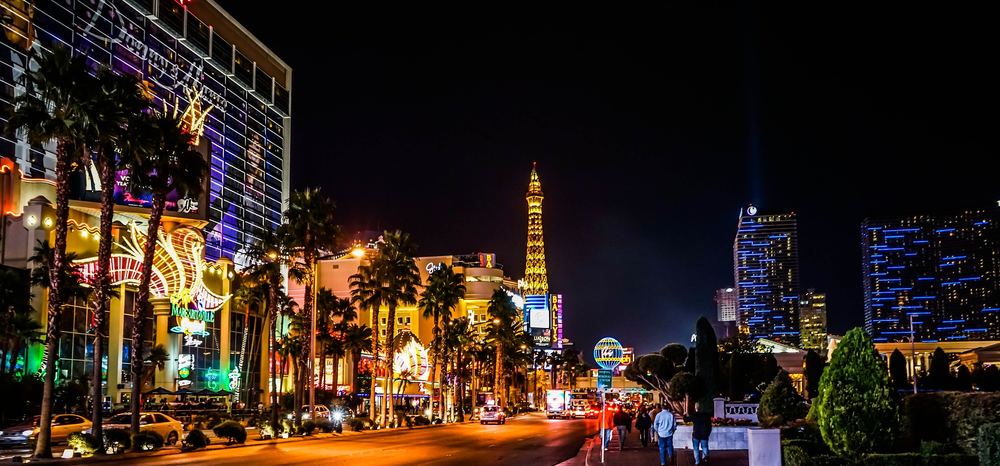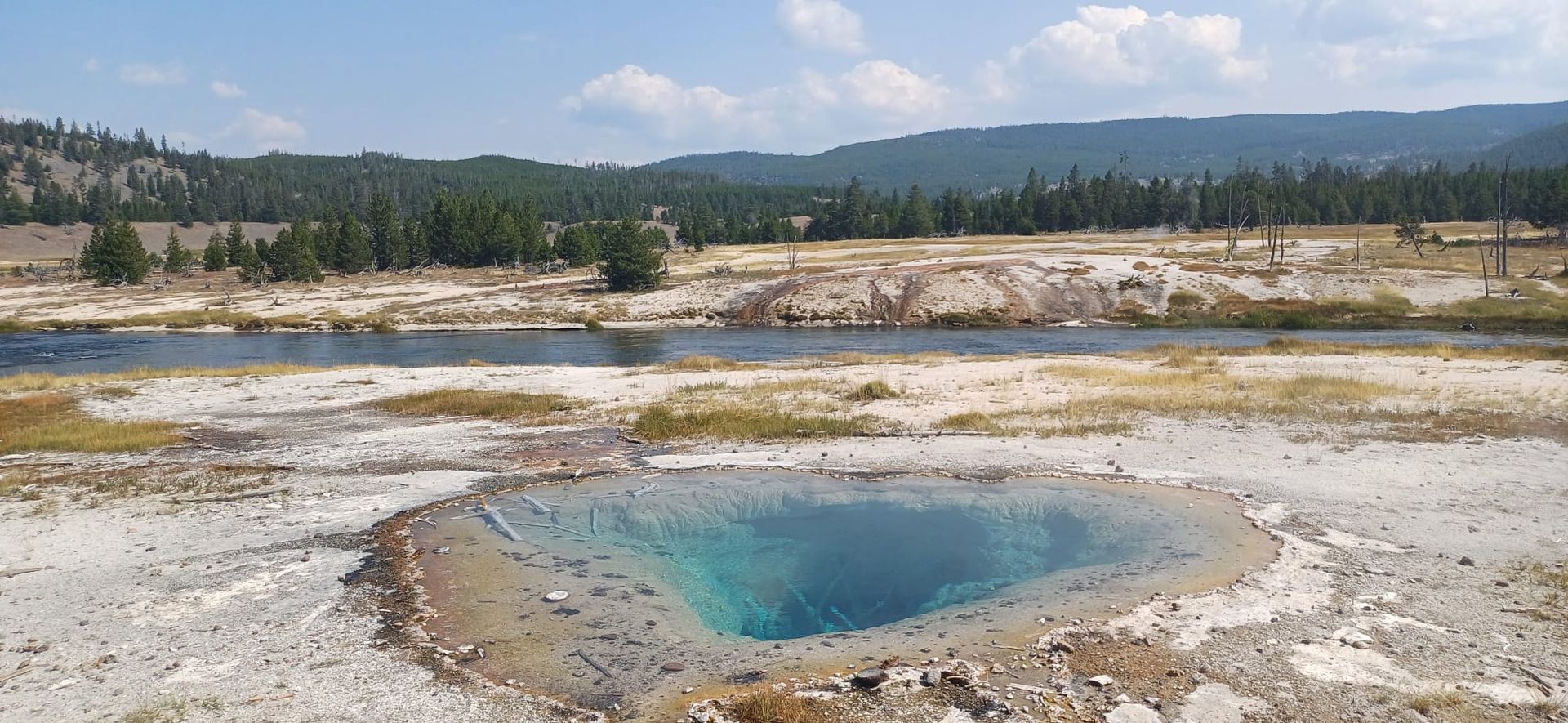The perfect Nashville to Dallas road trip takes you between two of the most famous cities in the Southern United States.
A 665-mile Nashville to Dallas road trip takes you through the states of Tennessee, Arkansas, and Texas. Along the way, you will pass through famous cities, National Parks, charming small towns filled with Southern charm, and countless natural and historic attractions that help you embrace the Southern landscape and way of life.
For anyone hoping to plan the perfect Nashville to Dallas road trip itinerary, we strongly suggest you read on.
The Perfect Nashville To Dallas Road Trip: How Far Is It, How Long Will It Take & What Is The Best Route?
The perfect Nashville to Dallas road trip covers 665 miles (1070 km) and takes 9 hours and 45 minutes to drive. Despite its impressive length, the best route for such a road trip is also very straightforward. You begin by joining the I-40 in Nashville, Tennessee, and following it southwest for 345 miles to Exit 153B in North Little Rock, Arkansas. Here, you join I-30 going south and take it the remaining 320 miles to your destination in Dallas, Texas.
Best Time To Take A Nashville To Dallas Road Trip
The best time to drive a Nashville to Dallas road trip is between early June and the end of September. This window avoids the peak of Tennessee tornado season, which runs between March and May, and ensures you experience the warmest, driest weather of the year, both along your route and at your destination. It also provides the opportunity to attend the Texas State Fair, which is held annually in Dallas at the end of September.

Best Place To Stop On A Nashville To Dallas Road Trip
While it is possible to complete a Nashville to Dallas road trip in one go, with almost 10 hours of driving time, we highly recommend breaking it up to ensure you have time to enjoy everything the route has to offer. There are a few places you could choose to make an extended stop along the suggested route, but none come close to having as much to offer as Memphis, Tennessee.
Memphis, Tennessee
Memphis is the second-largest and second-most populous city in Tennessee, behind only the capital, Nashville, in both metrics. An energetic city on the banks of the Mississippi River, Memphis is renowned for its role in founding the blues, soul, and rock ’n’ roll genres.
Music enthusiasts can visit renowned sites like Graceland, the iconic residence of Elvis Presley; Sun Studio, where legends like Johnny Cash and Jerry Lee Lewis recorded; and the Stax Museum of American Soul Music, which celebrates the city’s musical heritage. The Beale Street Entertainment District is abuzz with live performances, dining options, and bright neon lights, fostering a lively ambiance that embodies the essence of Memphis.
A rich tapestry of history, culture, and Southern warmth, visitors to Memphis can explore the National Civil Rights Museum, located in the historic Lorraine Motel, where Dr. Martin Luther King Jr. was assassinated, for a poignant and impactful experience.
The Memphis Riverfront and Tom Lee Park offer picturesque areas for walking or cycling along the Mississippi River, and Shelby Farms Park provides opportunities for outdoor activities just a short distance from downtown. With its internationally acclaimed Memphis barbecue, flourishing art venues, and a relaxed rhythm that characterizes the city, Memphis shines as a soulful destination brimming with history, taste, and passion.
Best Hotel To Stay At In Memphis, Tennessee – The Guest House At Graceland
The Guest House at Graceland in Memphis, Tennessee, is a beautiful, pet-friendly 4-star hotel that reflects Elvis Presley’s legendary aesthetics and Southern hospitality. Situated steps from the Graceland Mansion, it provides guests with an immersive experience honouring the King of Rock ’n’ Roll. Its sophisticated design blends contemporary comfort and timeless elegance, showcasing elements that mirror Elvis’s character and preferences.
Visitors can enjoy spacious, chic accommodations. All rooms feature stunning décor and furnishings, a private bathroom, and modern amenities. This includes a flat-screen cable TV, a work desk, a coffee maker, a seating area, a compact refrigerator, Wi-Fi, and air conditioning. Select rooms offer views of the courtyard, and room service is available!
A resort-style swimming pool, four restaurants, a fitness centre, private parking, and an airport shuttle are provided for your convenience, and evening entertainment maintains the essence of Memphis music. Providing easy access to the Elvis Presley Museum Complex and the shops and live performances on the Graceland premises, this is a once-in-a-lifetime opportunity to stay where Memphis and rock-and-roll royalty once lived.
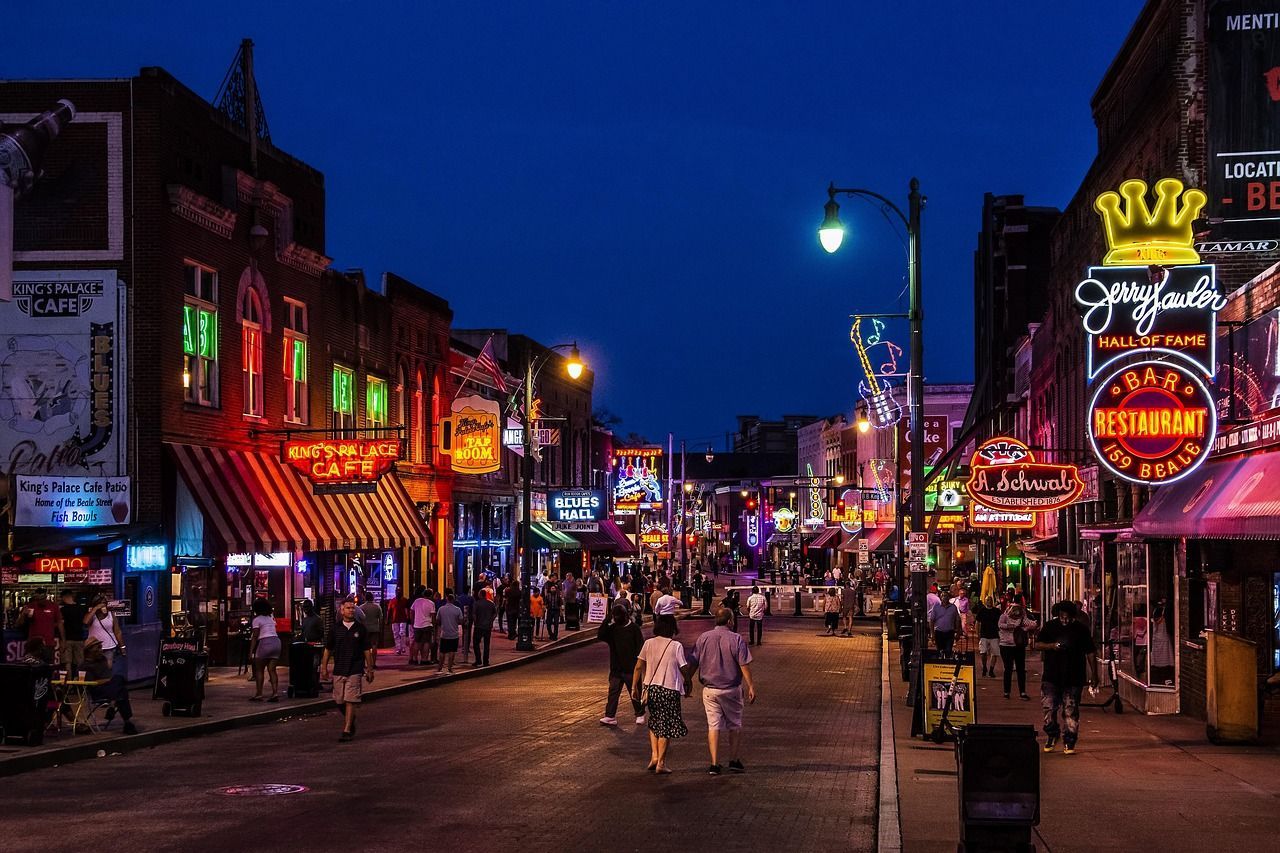
The Best Things To See On A Nashville To Dallas Road Trip
Dickson, Tennessee
Dickson, Tennessee, is a charming small town just west of Nashville. Brimming with history, outdoor attractions, and Southern hospitality, Historic Downtown Dixon is filled with boutique shops, local eateries, cafes, and live music venues, as well as numerous historic attractions.
The Clement Railroad Hotel Museum, housed in the historic 1913 Halbrook Hotel, chronicles the city’s railroad, Civil War, and political history. The Cumberland Furnace Iron Museum and its mid-19th-century building demonstrate the city’s iron industry legacy.
Montgomery Bell State Park, one of Tennessee's largest state parks, provides opportunities for hiking, fishing, camping, and enjoying the region’s natural beauty. City Lake and Luther Lake are ideal spots for fishing, kayaking, or enjoying a picnic. Dickson Skate Park and Splash Pad are family-friendly venues perfectly suited for children and teens.
Loretta Lynn’s Ranch
Loretta Lynn’s Ranch covers 6,000 acres and celebrates the life and legacy of the country music icon. Guided tours take fans through Loretta Lynn’s historic plantation home and a replica of her Butcher Holler childhood cabin. The 18,000-square-foot Coal Miner’s Daughter Museum displays Loretta's awards, costumes, and personal memorabilia. Loretta's Fan and Doll Museum, and a recording studio, complete the history lesson.
The ranch also includes Hurricane Mill, a water-powered mill on the National Historic Register that details the history of nearby Hurricane Mills, 100 miles of hiking and horse trails, Hurricane Creek’s tubing, kayaking, canoeing, and swimming spots, a swimming pool, a concert pavilion, gift shops, food service facilities, a full-service RV park, over 300 power and water campsites, primitive camping options, and 18 cabins.
The ranch even hosts events, including concerts, weddings, and the largest Amateur Motocross race in the United States.
Natchez Trace State Park & Forest
Natchez Trace State Park & Forest boasts 48,000 acres of woodlands and lakes and is perhaps the best outdoor location in Tennessee outside of Great Smoky Mountains National Park. Named after the historic Natchez Trace Trail, it is home to a diverse range of bird species, including warblers, tanagers, and flycatchers, as well as many other animals. This makes it ideal for birdwatching and wildlife spotting.
It boasts more than 40 miles of hiking and biking trails of various lengths and difficulties, 250 miles of equestrian trails, a dedicated wrangler camp, and four lakes ideal for fishing and boating. These include the 690-acre Pin Oak Lake, which offers water skiing, and Cub Lake, which has a public swim beach and boat rentals during the summer.
The park’s other facilities include picnic areas, playgrounds, a ball field, an archery range, and a museum showcasing local and park history, RV hookups, tent campsites, backcountry sites, cabins, the 47-room Pin Oak Lodge, and a restaurant.
Parker’s Crossroads Battlefield
Parker’s Crossroads Battlefield is a Civil War site commemorating the December 31, 1862, battle where Confederate General Nathan Bedford Forrest famously ordered his troops to "charge both ways" to escape encirclement by Union forces.
It boasts more than three miles of paved walking trails with over 50 interpretive signs detailing the battle's events, a self-guided driving tour of seven marked sites, and a visitor center with exhibits, a gift shop with Civil War memorabilia, information on local attractions, and brochures to assist with the walking and driving tours.
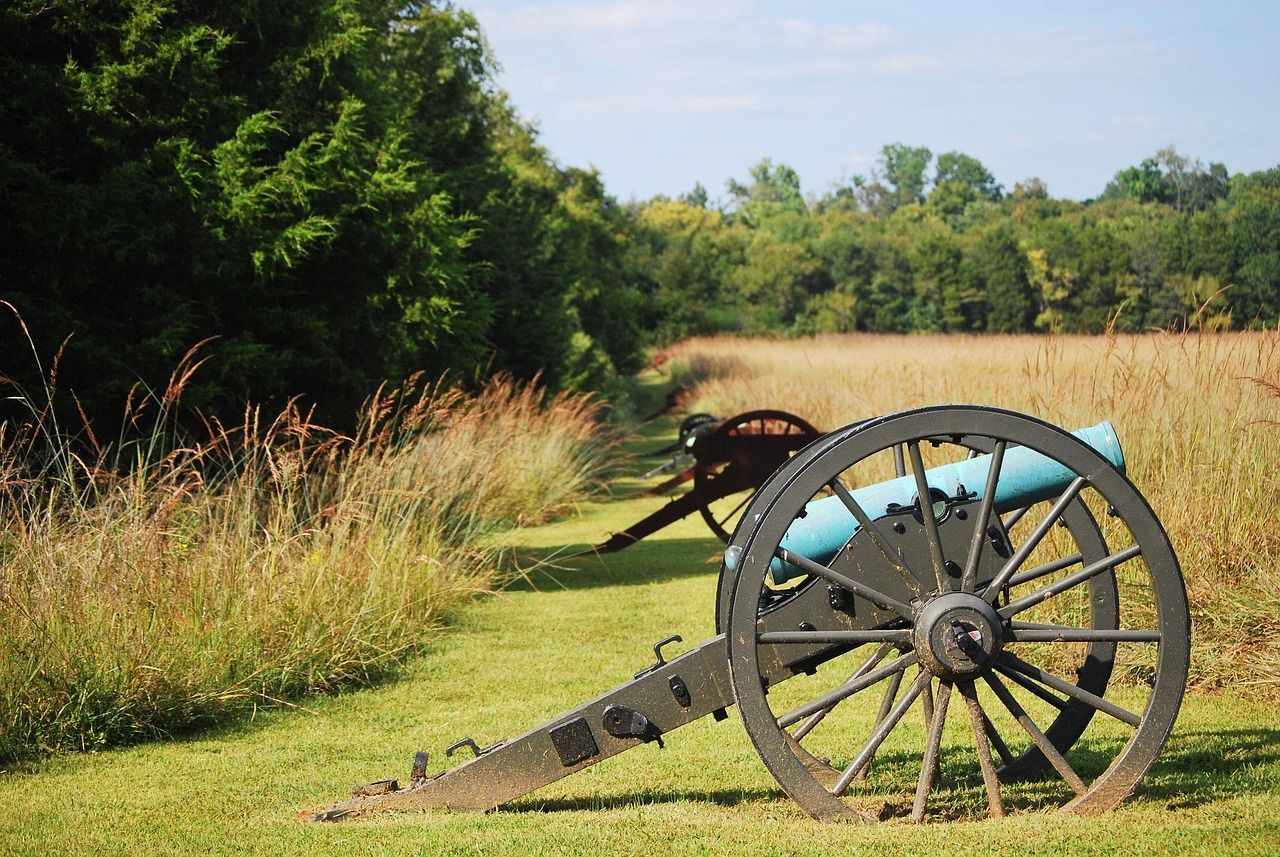
Pinson Mounds State Archaeological Park
Pinson Mounds State Archaeological Park is one of only two archaeological parks in Tennessee. Covering 1,200 acres, it boasts more than 15 Native American mounds that served burial and ceremonial purposes. This includes the 72-foot-tall Sauls' Mound, which is the second-highest prehistoric mound in the United States, after Monks Mound in Cahokia Mounds State Historic Site, Illinois.
Visitors can climb to the top and take in panoramic views, hike 6 miles of trails, explore the mounds and surrounding natural landscapes, or visit the Museum & Visitor Center, which resembles a Native American mound and offers 4,500 square feet of exhibits, an archaeological library, an 80-seat theatre showing a documentary on the site, and a 'Discovery Room' for interactive learning.
During the third weekend of every September, it hosts Archaeofest, a festival celebrating Native American culture and archaeology with craft demonstrations, storytelling, and various entertaining and educational activities.
Jackson, Tennessee
Jackson, Tennessee, is best known for its musical legacy. The birthplace of Rockabilly music, a fusion of country and rock, it also has connections to artists like Carl Perkins and Tina Turner, all of which local museums and music venues showcase to perfection. Downtown Jackson is filled with shops and boutiques offering local crafts, antiques, and unique finds, as well as events and markets showcasing the community's culture and creativity.
Ned R. McWherter West Tennessee Cultural Arts Center, nicknamed "The Ned," hosts performances, art exhibits, and the Carl Perkins Civic Center, named after a rockabilly legend, hosts concerts and community gatherings. The Casey Jones Home & Railroad Museum honours legendary railroad engineer Casey Jones and features his restored home as well as a collection of railroad memorabilia.
The Carnegie Center for Arts and History is housed in the historic Jackson Free Library building. It displays exhibits on local history and serves as a venue for arts and cultural events. The 165-acre Cypress Grove Nature Park features a boardwalk through a cypress forest that’s perfect for birdwatching and nature walks. The Ballpark at Jackson regularly hosts minor league baseball games and community events.
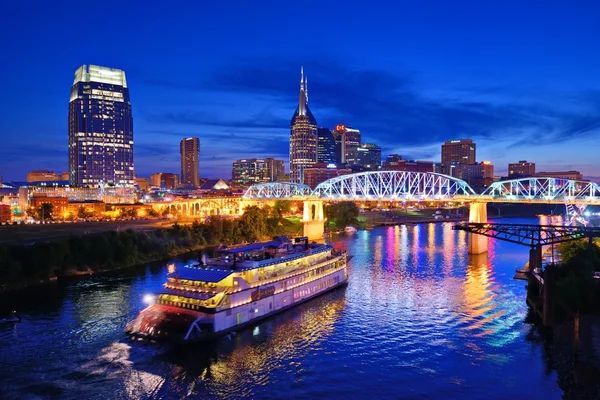
Tennessee Safari Park
Tennessee Safari Park is a 7.5-mile drive-through safari and a 20-acre walk-through zoo on a historic family farm. Visitors can drive their own vehicle and see or interact closely with over 80 species of animals from around the world, including zebras, camels, bison, and antelope, all of which roam freely! You can even buy feed cups to ensure the animals come as close as possible and feed them from your car windows.
The walk-through area has a petting zoo with friendly pygmy goats, a giraffe feeding station, and exhibits housing parakeets, sloths, and other exotic animals. At certain times of the year, the park even operates a drive-in theatre near the gift shop, offering family-friendly movies on weekend evenings.
Brownsville, Tennessee
Brownsville, Tennessee, is the birthplace of music icon Tina Turner and blues pioneer Sleepy John Estes. It celebrates its musical history with attractions and events such as the Delta Heritage Center, the Tina Turner Museum, Tina Turner’s childhood schoolhouse, the final home of Sleepy John Estes, and the yearly Exit 56 Blues Fest in May, which offers live performances, arts, crafts, and a barbecue-eating contest.
Other attractions in Brownsville include the College Hill Historic District, its Greek Revival and Gothic Revival architecture, and Billy Tripp’s Mindfield Cemetery, an expansive, evolving, metal sculpture installation that is the tallest freestanding sculpture in Tennessee and reflects the artist's life experiences.
The Dunbar-Carver Historic District boasts museums and sites that detail the history of Brownsville's African American middle-class community. This is a particularly poignant location, as Brownville is the site of the last lynching in Tennessee, when Elbert Williams was killed in June 1940.
Hatchie National Wildlife Refuge
The 11,500-acre Hatchie National Wildlife Refuge protects the diverse habitats along a 23-mile stretch of the Hatchie River. Founded in 1964, it serves as a sanctuary for migratory birds and supports an array of wildlife, including over 250 bird species, 100 fish species, and 35 mussel species. Designated an Important Bird Area, it’s ideal for birdwatchers, photographers, and wildlife enthusiasts hoping to observe migratory waterfowl and other wildlife.
Countless trails and scenic drives offer great opportunities for hiking and motor exploration, including routes around the popular Oneal Lake, which also provide opportunities for activities like motorized and non-motorized boating, fishing, and swimming in designated areas. Educational programs are offered throughout the year for anyone interested in their location, its landscape, or its inhabitants.
Little Rock, Arkansas
Little Rock is the largest, oldest, most populous, and capital city of Arkansas. Set along the banks of the Arkansas River, it presents a charming blend of history, culture, and Southern hospitality. The River Market District is a vibrant area brimming with dining options, galleries, shops, and picturesque riverfront walking and cycling paths on the Arkansas River Trail.
Little Rock Central High School National Historic Site is a significant site in the Civil Rights Movement, and the Old State House Museum provides insight into the state’s political history. The Clinton Presidential Center features displays focusing on American history and the life of former President Bill Clinton.
The Arkansas State Capitol is one of the finest complexes of its kind in the nation, thanks to its stunning architecture and multiple sculptures and memorials. Pinnacle Mountain State Park is just outside the city and is perfect for scenic walks and picnics. The Arkansas Museum of Fine Arts boasts contemporary exhibits and performances.
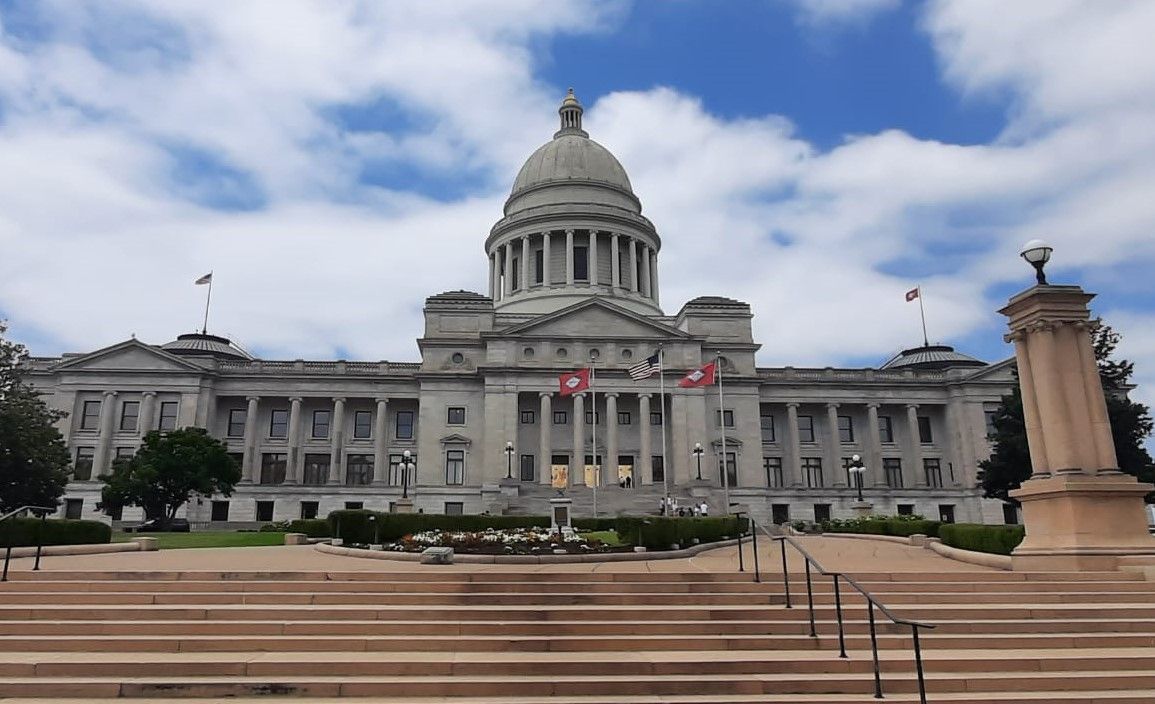
Hot Springs National Park & Hot Springs, Arkansas
Hot Springs, Arkansas, is a delightful resort town in the Ouachita Mountains. It boasts boutique stores, art galleries, and local dining establishments housed in Art Deco buildings, creating a vibrant and friendly environment filled with history and Southern warmth. Popular attractions include the family-friendly Magic Springs Theme and Water Park, the Gangster Museum of America, and the Bill Clinton Boyhood Home, which details the region’s gangster-era and presidential past. Its top attraction, though, is Hot Springs National Park.
Famed for its thermal springs that have drawn visitors for centuries, you can stroll along Bathhouse Row and see elegant early-1900s bathhouses now hosting museums, spas, and breweries, or soak in soothing mineral waters at modern facilities. More adventurous visitors may prefer exploring lush hiking trails, viewing scenic overlooks, boating, fishing, and swimming on Lake Hamilton and Lake Ouachita, wildlife viewing amid the Ouachita Mountains, or ascending to the top of the 216-foot Hot Springs Mountain Tower and seeing truly breathtaking panoramic views.
Texarkana
The Texarkana Metropolitan Area covers parts of 3 states: Texas, Arkansas, and Louisiana (Tex-Ark-Ana). However, the core of the region, the city of Texarkana, is located in only 2: Texas and Arkansas. This enables it to offer the perfect opportunity to experience two states simultaneously. The city's renowned State Line Avenue bisects the area, and the Post Office and Federal Courthouse is the sole one in the U.S. spanning two states, making it a unique photo opportunity.
Downtown Texarkana is home to an expanding arts and entertainment scene. The Perot Theatre, a beautifully renovated venue from the 1920s, hosts concerts and performances, and the Regional Arts Center highlights the works of local and regional artists. It also features many museums, hosts numerous local festivals, and boasts a warm, small-town Southern atmosphere throughout.
Outside of downtown, popular Texarkana attractions include Spring Lake Park and Wright Patman Lake, where you can take in scenic views, engage in boating or fishing, or navigate picturesque trails.
Final Thoughts On The Perfect Nashville To Dallas Road Trip Itinerary
As we bring our guide to planning the perfect Nashville to Dallas road trip to a close, you should now have a good idea of what your dream travel itinerary will include. This includes when to go, the route to use, how long to allow for the drive, and what to see and where to stay along the way.
All you have left to do now is decide what to take with you and start budgeting and booking everything. Then you can sit back and look forward to enjoying it all for yourself as soon as possible.
For anyone hoping to extend the drive beyond Dallas, we even have a few road trips from Dallas planned that you may want to consider: This includes:
A Dallas to New Orleans road trip
